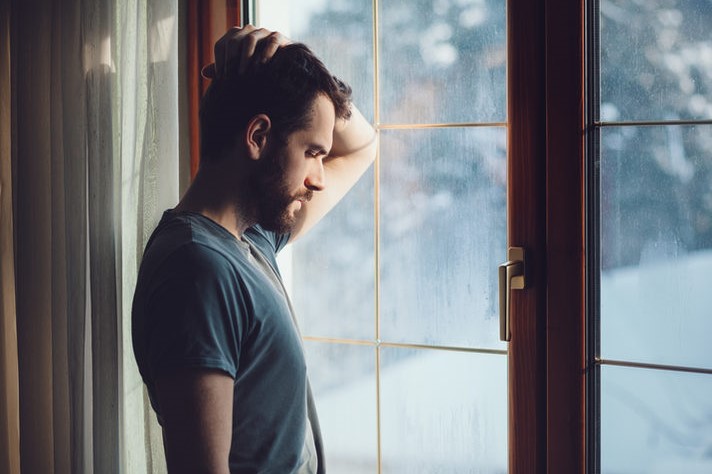
What is the Difference Between Anxiety and Depression: let's find out about these two widespread mental disorders
Anxiety and depression are two of the most common mental disorders in Australia. Let’s explore the effect of these two conditions, as well as their causes, symptoms, and treatment options
Anxiety and depression: What’s the link?
Feeling anxious or depressed are normal emotions to experience after being in a high-risk or upsetting circumstances.
With these , there’s a high chance that you or someone you know is affected by anxiety and depression – which are often experienced by adolescents and adults.
Anxiety and depression are serious mental health conditions that can affect daily routine and overall quality of life
Although some of their causes, symptoms, and treatment may overlap, there are critical differences between the two.
What is Depression
Depression is a type of major depressive disorder that negatively affect a person’s feelings, way of thinking, and how they act.
This condition causes the feeling of sadness or loss of interest in things or activities previously enjoyed.
It also results in physical and emotional symptoms which decrease one’s ability to function at home and work.
Most people will experience its negative symptoms at some point in their life and can occur at any age.
The average age people for people to suffer from depression is during the late teens to mid-20s.
It is also more common in women than men.
What is Anxiety
Anxiety is multiple mental and physiological phenomena, which includes a person’s fear of an actual situation or worrying of future events.
It is a normal response to stress, which can be beneficial in certain circumstances.
The ‘fear’ and ‘worry’ alert us for dangers and pushes us to prepare and attention.
However, it is important to know the difference between anxiety disorder and normal feelings of anxiousness and fear.
Recognising early symptoms helps most people with anxiety to lead normal, productive lives.
Signs and Symptoms of Anxiety and Depression
Although with similarities, anxiety and depression have distinct symptoms or what they call ‘mental markers.’
Symptoms of Anxiety
- Constant worry about the immediate or future events
- Having uncontrollable thoughts that is often negative
- Always thinking about death due to perceived danger
- Continually anticipating dangerous outcomes
Symptoms of Depression
- Low or depressed mood
- Lack of interest in once enjoyed activities
- Sudden increase or decrease in appetite
- Insomnia or hypersomnia
- Slow movements or lack of energy
- Lack of focus or trouble concentrating
- Suicidal thoughts or behaviors
- Lack of hope about themselves, others, and the world
- Feeling of guilt or worthlessness
- Think about death (or a persistent belief that life is not worth living)
Talk to a Mental Health Professional
If you are experiencing symptoms of anxiety and depression, chances are that a doctor or mental health professional will recommend medication or therapy.
Keep track of the symptoms and write them down in a journal to help in the diagnostic process.
Share your feelings and ask for professional advice.
This clarifies your condition and will help you understand treatment options, as well as manage symptoms.
Conclusion
Anxiety and depression are mental disorders that can happen to anyone, regardless of age, gender, and other societal factors.
Although these two conditions have similarities, it is important to know the ‘mental markers’ to differentiate them from each other.
It is normal to have feelings of anxiousness or being depressed from time to time.
However, if these feelings do not go away and start to interfere with day-to-day life, you might suffer from anxiety or depression.
The most important thing to know is that these are both treatable situations.
Never hesitate to seek help from a mental health professional or support from your loved ones.
Doing so will help you stay informed about your condition and on the right track towards a healthy mind and body.
Read Also:
Emergency Live Even More…Live: Download The New Free App Of Your Newspaper For IOS And Android
Defusing Among First Responders: How To Manage The Sense Of Guilt?
Temporal And Spatial Disorientation: What It Means And What Pathologies It Is Associated With
The Panic Attack And Its Characteristics
Pathological Anxiety And Panic Attacks: A Common Disorder
Panic Attack Patient: How To Manage Panic Attacks?
Panic Attack: What It Is And What The Symptoms Are
Rescuing A Patient With Mental Health Problems: The ALGEE Protocol
Why Become A Mental Health First Aider: Discover This Figure From The Anglo-Saxon World
Anxiety: A Feeling Of Nervousness, Worry Or Restlessness
Firefighters / Pyromania And Obsession With Fire: Profile And Diagnosis Of Those With This Disorder
Intermittent Explosive Disorder (IED): What It Is And How To Treat It
Management Of Mental Disorders In Italy: What Are ASOs And TSOs, And How Do Responders Act?
ALGEE: Discovering Mental Health First Aid Together
Rescuing A Patient With Mental Health Problems: The ALGEE Protocol
Basic Psychological Support (BPS) In Panic Attacks And Acute Anxiety
The Severity Of Depressive Symptoms Over Time May Help Predict Stroke Risk
Anxiety, When Does A Normal Reaction To Stress Become Pathological?
Generalised Anxiety Disorder: Symptoms, Diagnosis And Treatment


